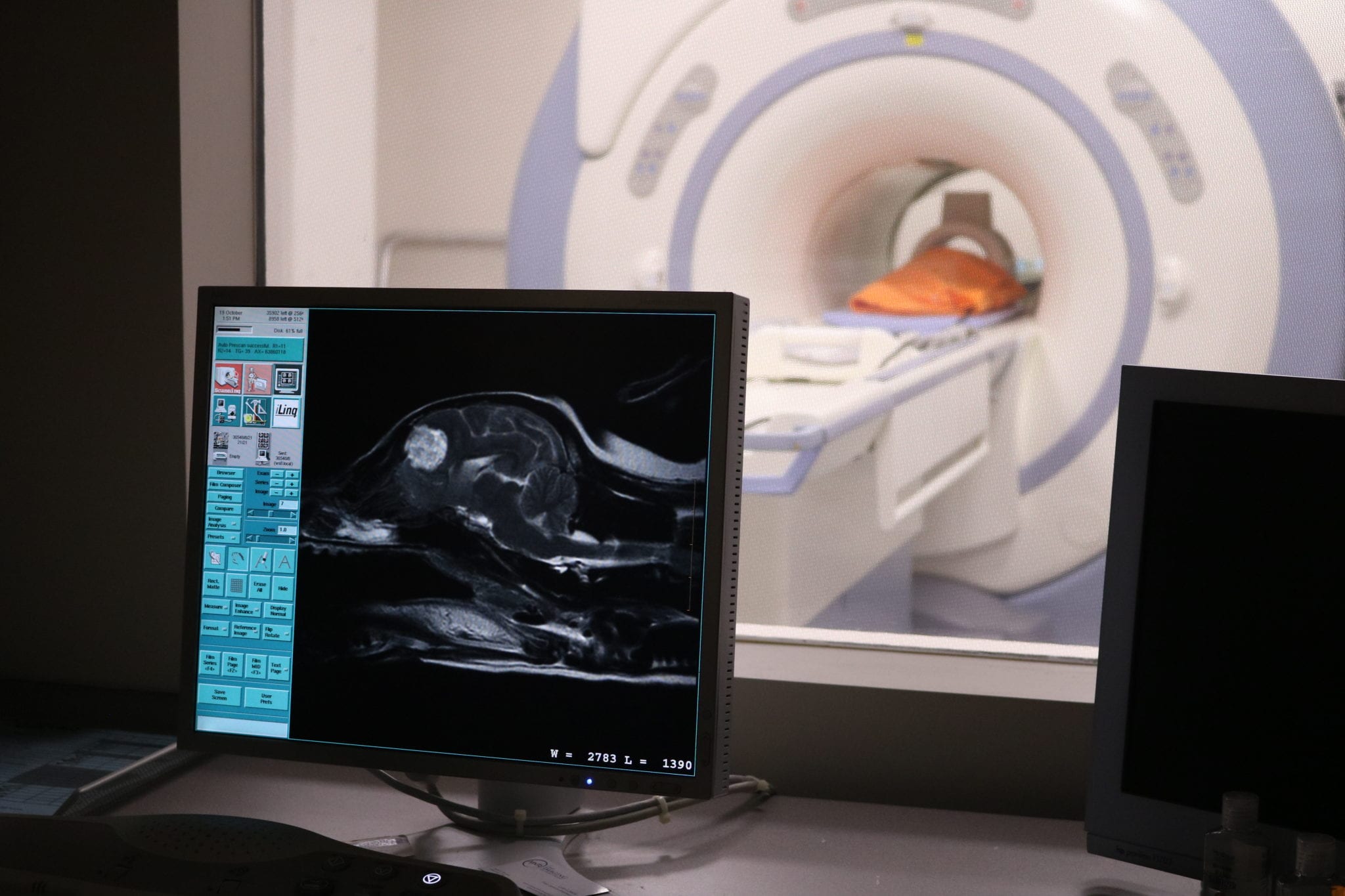A seizure is one of the most common neurological conditions a dog can experience. It is defined as an abnormal and unusually strong burst of electrical activity occurring within the brain. A seizure itself is not any kind of disease, but a symptom of a disease.

Types of Seizures in Dogs
There are two types of seizure: focal seizures, which are limited to one region of the brain, and generalized seizures, which affect the entire brain. During generalized seizures, the pet might lose consciousness, and will appear confused and disoriented after. These seizures are often precluded by abnormal behavior as well.
Symptoms of Seizures in Dogs
When a seizure happens in a dog, it can cause some alarming symptoms, including:
- Collapse
- Frantic paddling of the legs
- Loss of consciousness
- Urinating and/or defecating
- Salivating
- Uncontrolled shaking
What to Do if Your Dog’s Having a Seizure
As distressing as it can be to see your own pet having a seizure, it’s important to stay as calm as possible during the episode. Do not attempt to hold your pet still or move them, and keep your hands away from their mouth because they might bite!
While most seizures are not typically emergencies, you should contact your veterinarian or a veterinary neurologist as soon as you can for more information and to determine whether immediate medical attention is necessary.
Reasons Your Dog Could be Having Seizures
Perhaps your dog seemed perfectly fine before their seizure. Or maybe they were exhibiting some strange behaviors beforehand. We know what seizures are, but what causes them to occur, and why? Generally, possible causes can vary by age and breed.
The seizures that occur in a young, otherwise healthy dog will likely be caused by something different than whatever is causing the seizures in an older dog with chronic illness.
There are a variety of possibilities that could explain why your dog is having a seizure, and it’s extremely important to consult with a veterinary neurologist to discover and understand the cause. Knowing what is causing the seizure will make it easier for your veterinarian to prescribe a fitting treatment that will reduce the length, severity, and frequency of your pet’s seizures, and help your companion live a more comfortable life.

There are three different categories your dog’s seizures could fall into. These are distinguished by their relation to the brain and whether the seizures are caused by something outside the brain or inside the brain, or whether they have no underlying cause at all.
A Problem Outside the Brain
Some seizures in dogs occur as a result of health problems affecting parts of the body outside of the brain. These problems can include:
- Low blood sugar
- Poisons or toxins
- Liver problems
- Kidney disease
- Electrolyte abnormalities (low blood calcium)
A Problem Inside the Brain
Problems occurring within the brain that can cause seizures in dogs include:
- Brain tumors
- Strokes
- Brain swelling
- Head trauma
- Infection
- Malformation (hydrocephalus)

Idiopathic (No Identifiable Cause)
Idiopathic epilepsy is the most common cause of seizures in dogs, but the only way to definitively diagnose it is to rule out all other possible causes inside and outside of the brain. Other characteristics include:
- First seizure occurring between 1-5 years of age
- Generalized tonic-clonic or grand mal (whole body) seizures
- Normal neurological exam
- Normal behavior at home between seizures
Diagnosing Seizures in Dogs
To figure out the cause of your pet’s seizures, we need to perform testing that will either show us the actual cause, or at least help us rule out every other possible cause. We take a step-wise approach in order to obtain as much information as we can about your pet and their condition.
The steps for diagnosing your dog’s seizures involve:
- Learning about when the seizure episodes occur, how long they last, and how frequently they occur
- Knowing what your pet was doing before, during, and after their seizure
- Performing thorough physical and neurological examinations
- Performing baseline blood and urine tests, along with X-rays of the chest and abdomen
- If necessary, performing advanced testing such as high-field MRI, which can show us if the brain has tumors or shows signs of swelling, and a spinal tap

Seizures that occur outside the brain as a result of some other bodily illness can usually be diagnosed via blood testing. Testing the blood can alert us to abnormal organ function, infection, abnormal blood cell count, and more. MRI and CSF analysis (spinal tap) are the best tools for revealing structural abnormalities in the brain which could be responsible for the seizures.
Finally, if we manage to rule out every other possible cause of seizures in your pet (diagnosis of exclusion), we can surmise that they may have idiopathic epilepsy.
When is a Seizure an Emergency for Dogs?
There are two important factors that characterize an emergency seizure, and if you observe them with your pet, you should contact your veterinary neurologist immediately:
- The seizure lasts longer than 3 minutes
- Your dog has 3 or more seizures in 24 hours or less
See a Vet Neurologist for Your Dog’s Seizures
If you have further questions about diagnosing and treating seizures in dogs or would like to set up a consultation, we would be happy to help! Just contact one of our hospital locations in Miami, FL, Boynton Beach, FL, Jupiter, FL or Virginia Beach, VA.
Posted in Seizures
